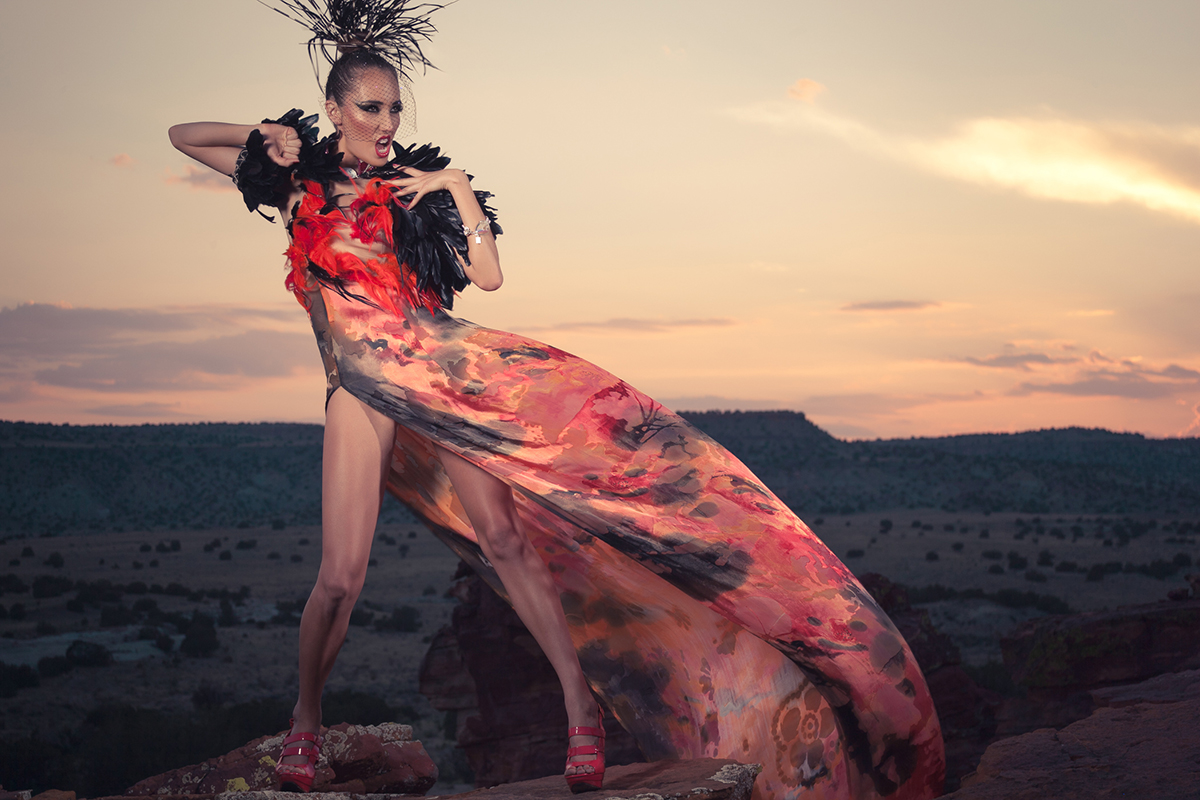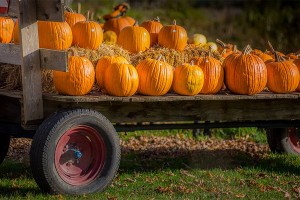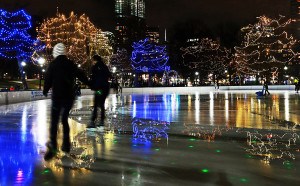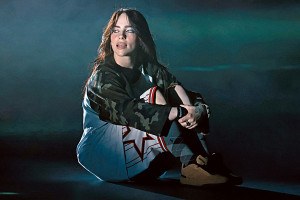Peabody Essex Museum Celebrates Native American Design in ‘Native Fashion Now’

Cape, dress, and headdress by Orlando Dugi from ‘Desert Heat’ collection / Photo by Unék Francis, courtesy of Peabody Essex Museum
Name one Native American designer. Chances are, you’re drawing a blank.
But in fact, the work of contemporary Native designers is quite prevalent in popular culture, appearing everywhere from runway shows to the wardrobes of prominent public figures to television.
There’s Bethany Yellowtail, a designer with Crow and Northern Cheyenne roots who spent years working for global fashion powerhouses like BCBG and Baby Phat before starting her own label, B.Yellowtail.
There’s Frankie Welch, of Cherokee descent, who’s dressed five first ladies and designed ties for seven presidents. In 1968, she helped Lady Bird Johnson stage the first-ever fashion show at the White House, and one of the designs for Betty Ford is now on view at the Smithsonian’s National Museum of American History.
There’s Patricia Michaels, a Taos Pueblo designer, who participated in season 11 of the hit TV series Project Runway, which aired in 2013.
The three designers are among more than 70 featured in “Native Fashion Now,” an upcoming major exhibition at the Peabody Essex Museum. A piece by Michaels, made during one of the Project Runway design challenges, serves as the opener, displayed among 30 or so parasols, constructed by the designer from cedar, metal, and hand-dyed textiles.
“It’s meant to be surprising and delightful and otherworldly and really immediately immerse you in a totally different environment than what you might expect when you think about Native American fashion,” says Karen Kramer, PEM’s curator of Native American art and culture.
The exhibition encompasses nearly 100 works, both clothing and accessories, made from the 1950s to today. Backgrounds of the featured designers are varied—they’re both male and female, emerging and established, self-taught and trained in prestigious programs, purveyors of both streetwear and haute couture.
“The works as a whole demonstrate that Native designers are very connected to their ancestral communities, but at the same time, they’re very connected to the global community,” says Kramer. “It’s an opportunity to celebrate them as Native artists, as well as artists at large.”
The curator and her team at PEM worked to identify designers for the exhibition with the help of four advisors, including Michaels, as well as designer, educator, and Boston Fashion Week founder Jay Calderin, scholar and Beyond Buckskin founder Jessica Metcalfe, and fashion scholar Francesca Granata.
The exhibition breaks down into four themes, categorizing featured designers as pathbreakers (“groundbreaking designers who have really changed the landscape of Native American fashion and design”), revisitors (“contemporary Native designers who are expanding on the past in exciting new ways”), activators (designers who embrace “personal style and streetwear and how you can express who you are in what you wear in an everyday kind of way”), and provocateurs (“designers who are really experimental in terms of playing with forms and materials and motifs”).
“You’ll see that there are some familiar cultural references that you might have encountered over the years in terms of looking at Native American art, but some of the designs are super surprising,” says Kramer. “Some of it I think will be familiar in terms of motifs, but some of those motifs you might only be familiar with through Forever 21, and so to see it on a handwoven textile will be a nice surprise, too.”
Not to deter from the celebration of Native designers, only three ensembles featured in the exhibition were designed or styled by non-Native designers.
“We really wanted to open the dialogue on what it means to be a creative fashion designer, but also the conversation about cultural borrowing and cultural appropriation and misappropriation,” says Kramer. “But we also have works in the show created in collaboration between Native and non-Native designers. It’s not just about creating this binary—it’s about complicating the landscape.”
While the non-Native component of the exhibition is exclusive to PEM, the rest of the show will travel to the Portland Art Museum in Portland, Oregon, the Philbrook Museum of Art in Tulsa, Oklahoma, and the Smithsonian’s National Museum of the American Indian in New York City over the next two years.
For the museum in Salem, the exhibition builds upon a long commitment to Native American art—PEM’s collection is extensive, dating back to more than 10,000 years—as well as a more recent initiative to showcase more fashion.
“It’s just the next natural and logical step,” says Kramer. “There’s an incredible upswing of contemporary Native fashion, and so we wanted to capitalize on this exciting movement.”
“Native Fashion Now” opens on Saturday, November 21, at the Peabody Essex Museum, 161 Essex St., Salem, and will be on view through March 6, 2016. For more information, including related programming, visit pem.org.


